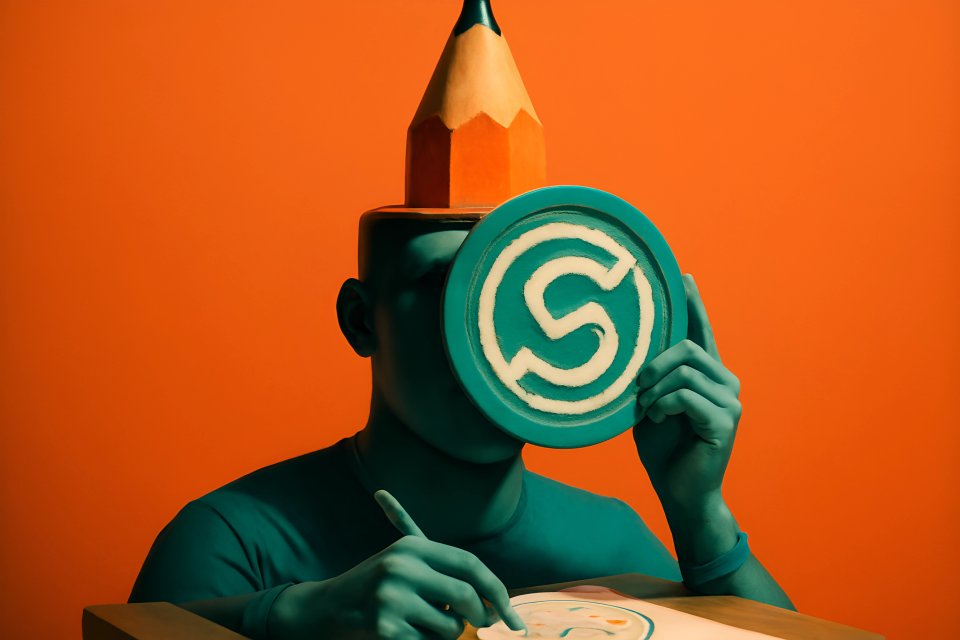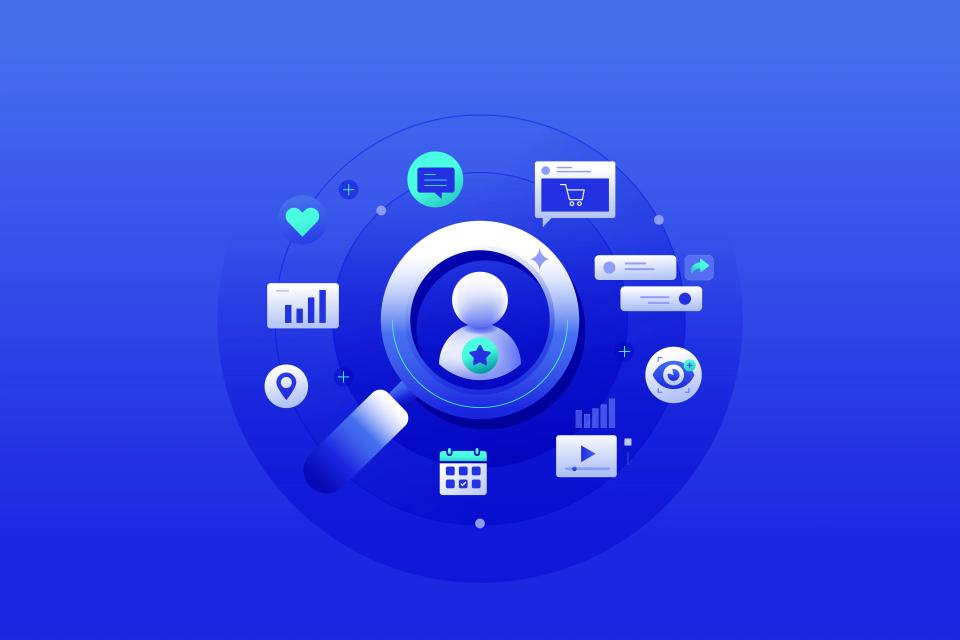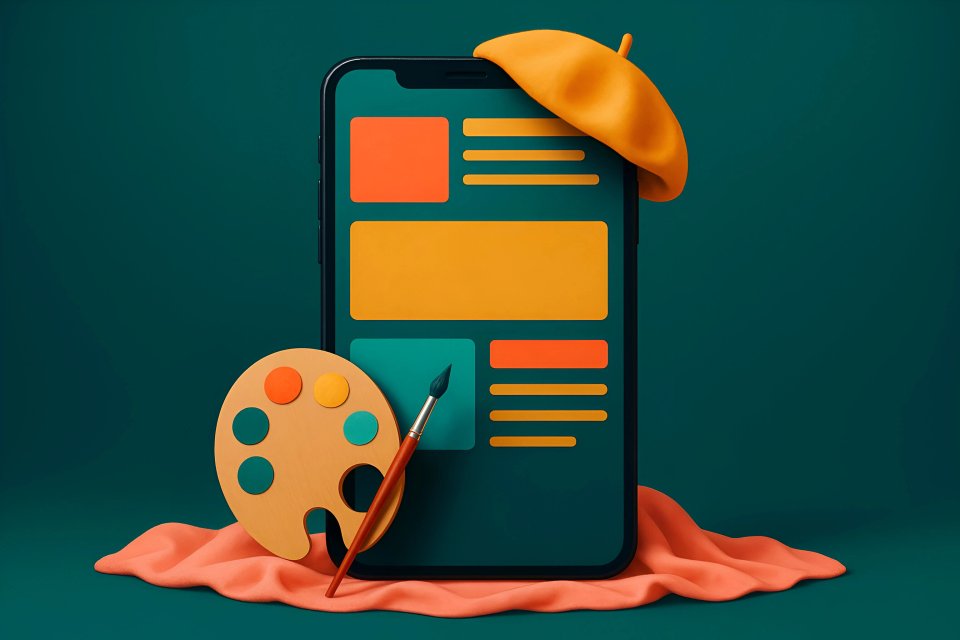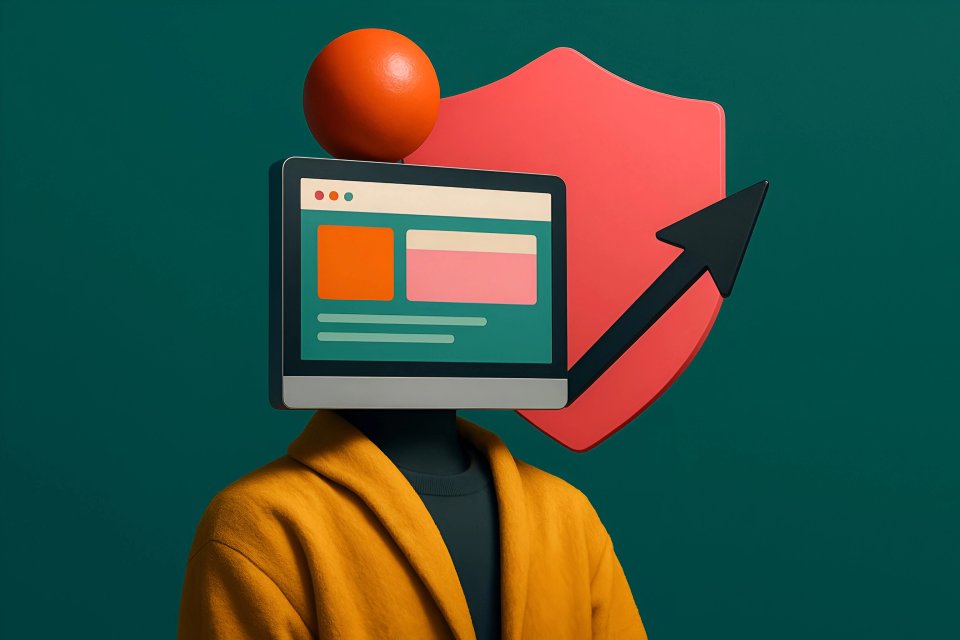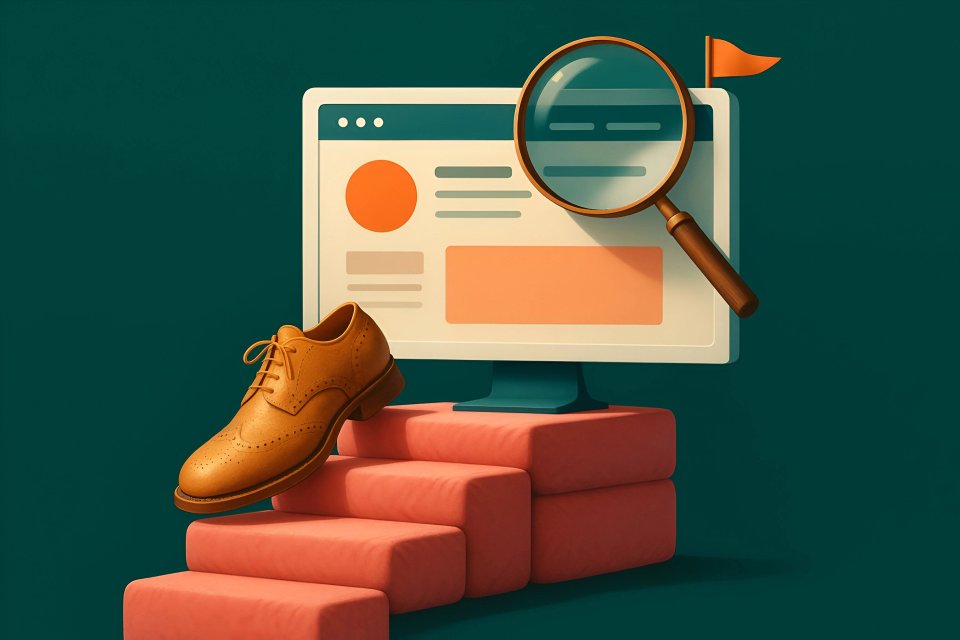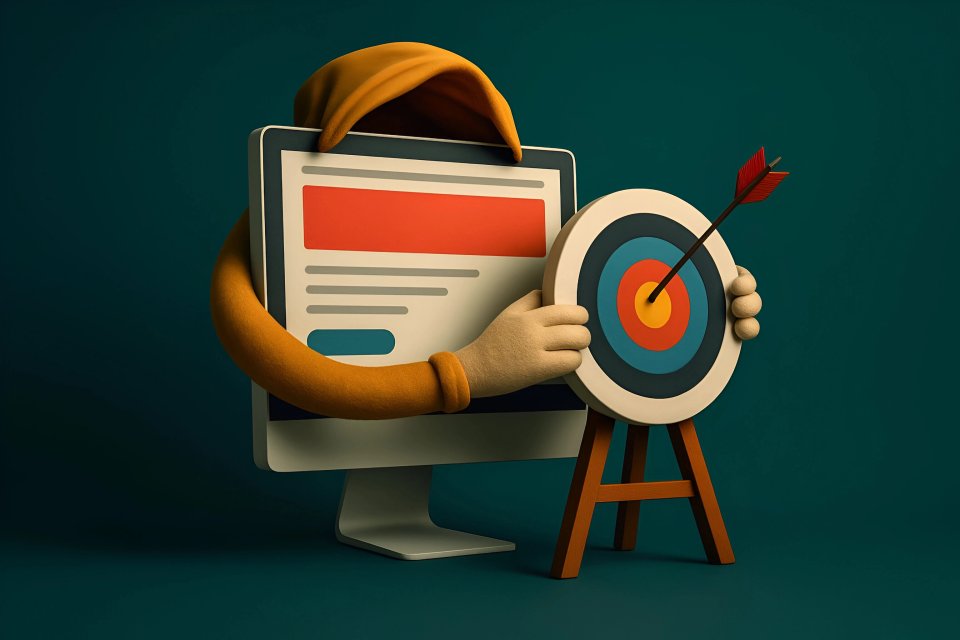What makes a brand like Apple or Nike instantly recognizable? Stop and think about it. It’s not just a logo; it’s an entire story, told in a single, powerful glance.
In today's deafening digital marketplace, a generic brand presence is a death sentence. It gets ignored, scrolled past, and forgotten. Too many businesses throw money at a logo but fail to build the crucial narrative around it, leaving them with a weak identity that fails to connect, persuade, or sell.
This guide is your roadmap out of the sea of sameness. We will move beyond basic design tips and show you how to strategically fuse a memorable logo with compelling visual storytelling. The result? A brand identity that truly captivates and clicks. At CaptivateClick, we've spent over 15 years helping global brands build these powerful visual identities from the ground up, and this guide distills our hard-won experience into actionable steps for you.
Part 1: The Foundation - What is a Brand Identity (and Why It's More Than a Logo)
Let’s get one thing straight: your brand identity is the collective of every single visual element that represents your company. It is the face you show the world, the uniform your message wears. It’s the silent handshake that happens before you ever say a word.
A truly powerful identity is built from several critical pieces working in perfect harmony. When these elements are aligned, they create a seamless and persuasive experience for your customer. They stop being separate parts and become a unified force.
The Key Components of a Cohesive Brand Identity
Think of your brand identity as a complete system. The logo is the cornerstone, the most recognizable piece. But the other elements give it context, emotion, and meaning.
Your color palette is the mood, setting the emotional temperature for every interaction. Your typography is the voice, determining whether you sound authoritative, friendly, or innovative. And your imagery and photography create the world your brand lives in, showing customers a place they want to be.
Finally, your iconography and graphic elements act as a unique visual language. According to Shopify, these tangible components—logo, color, typography, and imagery—are the core of what separates a memorable brand from a forgettable one. When they work together, they build an unshakable presence.
The Business Case: Why a Strong Identity Matters
Why should you obsess over this? Because a strong identity is a powerful business asset that drives real-world results. It’s your primary weapon for differentiation, allowing you to carve out your own space and stand out from the competition.
A professional, cohesive identity builds immediate trust and credibility. It tells customers you are serious, reliable, and worthy of their business. This emotional connection is what fosters fierce loyalty, turning one-time buyers into lifelong fans. In fact, a strong brand identity can be so valuable that it enables premium pricing and builds resilience against market downturns, as Investopedia notes with Apple's staggering $241 billion brand valuation.
Most importantly, it ensures consistency. A unified identity means your website, social media ads, and email campaigns all feel like they come from the same trusted source. This creates a seamless experience that builds brand recall and drives conversions.
Part 2: The Cornerstone - A Strategic Guide to Logo Design
Your logo is not a piece of art to be admired. It is a strategic business tool, engineered to communicate your brand’s entire promise in a fraction of a second. It is the most concentrated, high-impact expression of who you are, what you do, and why you matter.
Before a single pixel is pushed or a pencil touches paper, the real work begins. This is the strategic foundation that separates iconic logos from amateurish graphics. A great logo is born from deep thinking, not just creative software.
Step 1: The Discovery & Strategy Phase (Before You Design)
First, you must define your "Why." What is your core mission, your vision for the future, and the values that guide you? A logo without a purpose is just a pretty shape.
Next, you must intimately understand your audience. Who are you trying to connect with on a primal level? What are their hopes, fears, and desires?
Finally, you must analyze the competition. What are they doing right? What are they doing wrong? Your goal isn't to copy them but to find the open space where you can be different, better, and more memorable. This strategic process is the first and most critical step in HubSpot's definitive guide to logo design.
Step 2: Understanding the 7 Types of Logos
Not all logos are created equal. Understanding the different formats is key to choosing the right tool for the job. Each type serves a different strategic purpose.
According to a detailed breakdown of the 7 types of logos and when to use them, your main options include:
- Monogram (or Lettermark): Ideal for long business names (e.g., HBO, NASA).
- Wordmark (or Logotype): Focuses on the business name itself (e.g., Google, Coca-Cola).
- Pictorial Mark: An iconic, graphic-based symbol (e.g., the Apple logo, the Twitter bird).
- Abstract Mark: A conceptual, non-representational shape (e.g., Pepsi, BP).
- Mascot: An illustrated character that represents the brand (e.g., KFC's Colonel, The Michelin Man).
- Combination Mark: A pairing of a wordmark and a symbol (e.g., Doritos, Lacoste).
- Emblem: The brand name inside a symbol or shape (e.g., Starbucks, Harley-Davidson).
Choosing the right type depends entirely on your brand name, audience, and industry.
Step 3: Applying Logo Design Best Practices
A world-class logo isn't judged on subjective taste. It's measured against five timeless principles that ensure its effectiveness and longevity.
Is it simple enough to be recognized in an instant? Is it memorable enough to make a lasting impression after just one look? Is it timeless, or will it look dated in five years?
Most critically, is it versatile? A great logo must work flawlessly in black and white, as a tiny favicon on a browser tab, and blown up on a massive billboard. Finally, is it appropriate for your industry and target audience? A playful mascot might work for a cereal brand but would undermine a law firm.
The Psychology of Color and Shape in Logo Design
Never underestimate the power of Color Psychology. The colors and shapes you choose send subconscious messages directly to your customer's brain. They are shortcuts to emotion and perception.
Colors evoke powerful feelings: blue communicates trust and security, which is why it's favored by banks and tech companies. Red signals passion, excitement, and urgency, making it perfect for fast food and entertainment brands. As Adobe's guide to color meaning explains, these choices are deeply strategic.
Shapes work the same way. According to the principles of logo shapes psychology, circles suggest community and unity, while squares and rectangles imply stability and reliability. Triangles can convey power and motion. Fusing the right color with the right shape is how you create a logo that communicates your core message without saying a word.
Part 3: The Narrative - Weaving Your Story with Visuals
If your logo is the title of your story, then visual storytelling is the plot. This is the critical step where brands go from being merely recognized to being truly unforgettable. It’s how you build an emotional universe around your logo that draws people in.
Visual storytelling is the art of using a consistent system of images, graphics, and video to convey a narrative. It’s about evoking emotion and communicating complex ideas in a way that words alone cannot. It’s how you make your audience feel something about your brand.
Connecting Your Logo to the Larger Brand Story
Your logo should be the protagonist of your visual story. Every photo, icon, and video you create should feel like it belongs in the same world as your logo. The goal is to create a seamless narrative experience.
For example, as we explored in a case study on transforming brand identity with logo design, when we designed a logo for a client that evoked crisp mountain air, we carried that feeling through the entire website. We used airy layouts, cool color palettes, and stunning nature-focused imagery. The logo wasn't just a mark; it was the anchor for the entire brand world.
Essential Visual Storytelling Techniques for Digital Platforms
In the digital realm, your story unfolds across multiple platforms. The key is to use techniques that reinforce your narrative everywhere your customers see you. This is how you build a brand that feels omnipresent and trustworthy.
Start with Consistent Imagery. Curate a distinct photo style—whether it's bright and airy, dark and moody, or candid and authentic—that reflects your brand's personality. Then, develop Custom Iconography, a unique set of icons that reinforces your brand’s visual language on your website and in marketing materials.
Leverage Video & Motion Graphics to tell your origin story, showcase emotional customer testimonials, or explain your process. And don't forget Data Visualization; turn boring statistics into compelling, shareable infographics. Content with relevant visuals gets 94% more views than content without, proving that a strong visual narrative is essential for engagement.
Part 4: Unifying Your Vision - Ensuring Consistency Across All Channels
You can have the most brilliant brand identity in the world, but it's utterly useless if it's not applied with ruthless consistency. This final stage is all about implementation and management. It’s where you protect your investment and ensure your brand shows up strong, every single time.
A fragmented brand experience confuses customers and erodes trust. Consistency, on the other hand, builds recognition and reinforces your message at every touchpoint. This is how you turn a great identity into a dominant brand.
The Single Source of Truth: Your Brand Guidelines
Your brand guidelines document is what Bynder calls "the single source of truth" for your visual identity. It is a comprehensive rulebook that dictates exactly how your brand should be presented to the world. It is non-negotiable.
This document outlines everything from correct logo usage and color codes (HEX, RGB, CMYK) to typography rules and tone of voice. It is the critical tool that empowers your internal teams and external partners—from designers to marketers to ad agencies—to maintain absolute brand integrity. For a deeper look, you can explore our guide on mastering business branding with a distinct visual identity.
Applying Your Visual Identity in the Wild
With your guidelines in hand, it's time to deploy your identity across every channel. On your Website, your brand identity should inform everything from button styles and layouts to the overall user experience. It’s about translating your brand’s feeling into a functional interface, a process we detail in our guide to aligning website aesthetics with brand strategy.
On Social Media, create templates for Instagram posts, Facebook covers, and LinkedIn ads that are instantly recognizable in a fast-moving feed. Your Email Marketing campaigns should feel like a natural, seamless extension of your website. Even your Digital Ads must be perfectly on-brand to build recall and maximize click-through rates. Every single touchpoint is an opportunity to reinforce your story.
Conclusion: Your Brand is Your Story—Tell It Powerfully
A distinct brand identity is one of the most powerful assets your business can own. It is built on two unshakable pillars: a strategic, well-designed logo and a consistent, emotionally resonant visual story. When these two forces work together, they create a brand that doesn't just compete—it dominates.
By following this guide, you are now equipped to move beyond simply having a "pretty logo." You have the knowledge to build a brand that people remember, trust, and champion. You have the power to craft an identity that captivates your audience and clicks with their deepest desires.
Ready to craft a brand identity that drives real results? The expert designers and strategists at CaptivateClick are here to help you build a visual presence that commands attention and inspires action. Contact us today for a free consultation on our logo design and brand strategy services.

